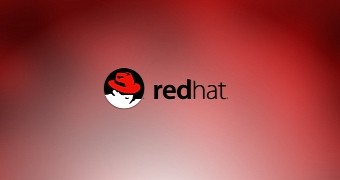World's leading provider of open source solutions, Red Hat, Inc., announced the availability of the fourth installment of its Red Hat Enterprise Linux (RHEL) series 7 operating system.
Coming nine months after the previous point release, Red Hat Enterprise Linux 7.4 is here as the latest and most advanced version of the commercial Linux-based operating system that uses the RPM (Red Hat Package Manager) package management system which was adopted by numerous GNU/Linux distributions, including popular ones like SUSE Enterprise Linux, Oracle Enterprise Linux, and many others.
Packed with a set of new security enhancements, performance improvements, and new automation capabilities, Red Hat Enterprise Linux 7.4 offers enterprises and organizations the most powerful operating system and feature-full for running traditional and cloud-native applications, as well as various enterprise IT operations like virtual machines, public and multi-cloud footprints.
"The latest version of the world’s leading enterprise Linux platform supports each of these deployment methodologies with new security features, improved performance and introduces new automation capabilities to cut through the inherent complexities of heterogeneous datacenters," said Jim Tottonvice, President and General Manager, Platforms Business Unit, Red Hat.
What's new in Red Hat Enterprise Linux 7.4
New security features included in the Red Hat Enterprise Linux 7.4 release are USB Guard for limiting data injection and leaks by providing system administrators with greater control over how certain users use plug-and-play devices, refreshed audit capabilities to make it easier for sysadmins to filter event logs, as well as to gather more information from critical events or interpret a huge amount of records.
In addition, the container security functionality was enhanced as well in Red Hat Enterprise Linux 7.4, with full support for using SELinux with OverlayFS to help administrators secure the underlying file system, as well as to allow them to use the popular Docker Linux app container engine, along with namespaces for fine-grained access control.
Red Hat Enterprise Linux 7.4 also ships with support for NVMe Over Fabric, providing customers with reduced overhead and increased flexibility when accessing high-performance NVMe storage devices that are located in the data center on both Infiniband and Ethernet fabric infrastructures. Red Hat Enterprise Linux is also now better when deployed on the public cloud, thanks to the numerous under the hood performance improvements to the boot process.
Among other new features implemented in Red Hat Enterprise Linux 7.4, we can mention support for the Elastic Network Adapter (ENA) on Amazon Web Services (AWS), built-in support for SELinux and OverlayFS, support for the overlay2 storage graph driver, support for package layering with rpm-ostree, and a Technology Preview of LiveFS, a new file system that enables users to install layer packages and security updates without rebooting the operating system.
Red Hat Enterprise Linux 7.4 also introduces a Technology Preview of Red Hat Enterprise Linux System Roles to enable users to create an automated workflow via Ansible automation, as well as to provide a common management interface across all major versions of the Red Hat Enterprise Linux operating system. A Development Preview of Red Hat Enterprise Linux on the 64-bit ARM architecture is provided as well, along with IBM Power and IBM z Systems support.

 14 DAY TRIAL //
14 DAY TRIAL //